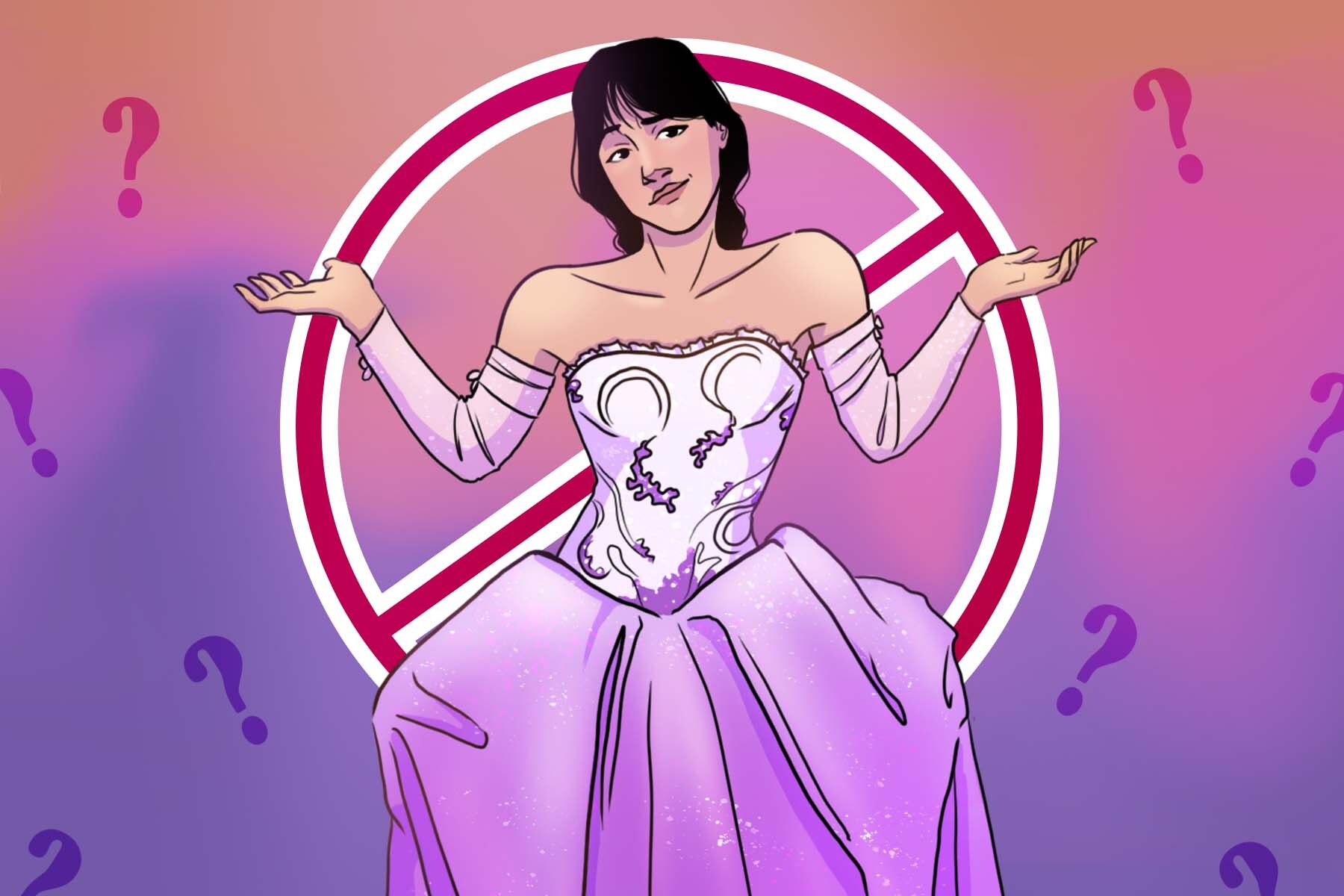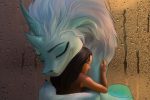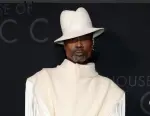During one of the film’s more tender moments, Ella smiles at Prince Robert and says, “That was the most romantic moment of my life!” And his response? “Same.”
Amazon’s 2021 reimagining of “Cinderella” is what happens when studios have the budget for major stars, but don’t put in the effort to make the film something special, or even enjoyable to a wide range of audiences.
The film, though not quite as disastrous as Twitter will have you believe, leaves a lot to be desired. Even before its release, audiences were skeptical about the prospect of yet another “Cinderella” story. And although the film includes several major actors in the lead cast, most of the film’s faults come from the story, script and general execution.
Staring pop star Camila Cabello as Cinderella or “Ella,” in addition to Broadway talents like Idina Menzel, Billy Porter and James Corden, the film constantly treads a thin line between “charming” and “cringe-worthy.” After hearing about the money and lack of effort put into this production, you might be asking, “Did we even need another Cinderella?” The answer, I believe, is “no,” though this film certainly could have tried harder to earn a spot among the top “Cinderella” adaptations.
The twist employed for this new version of an old fairy tale is that Ella dreams of being an entrepreneur, and she makes dresses in her spare time, hoping to one day have a shop of her own. This, however, is not where the fairy-tale deviations end. The prince, Prince Robert, is just a guy who can’t figure out what he wants from life until he meets Ella, as she is, outside of any ball. The Fairy Godmother is now Billy Porter as “Fab G,” and comes as a wish granted to Ella after a random act of kindness. Ella still has a stepmother and two stepsisters, and she still lives in an unsightly basement.
But instead of being ridiculed and forced to work around the clock, Ella mostly just designs dresses in her basement and endures few insults from her stepfamily. Ella’s stepmother has misplaced yet good intentions, and her stepsisters aren’t even mean or rude to her; on one occasion, a stepsister asks Ella if she’s pretty as a genuine question, and though it’s played off as a touching moment, anyone who’s seen other versions of this story will find this stepfamily dynamic a bit odd. This makes it hard to feel sorry for her while connecting with her kindness, as one usually might do when watching another “Cinderella” rendition, though this could be a refreshing change for some viewers.
That being said, the stepfamily dynamics are of little concern compared to other parts of the film. One of the most jarring parts of the movie, for many viewers, is its soundtrack. A mix of old and new pop song covers, in addition to a few original songs written for the film, the music of “Cinderella” is all over the place, to say the least.
“Nothing thematically links any of the songs that were chosen to knit this film into a musical,” said writer David Sims in his review for The Atlantic. “Prince Robert sings ‘Somebody to Love,’ by Queen, because he’s looking for somebody to love. The wicked stepmother belts out ‘Material Girl,’ by Madonna, because she’s a bit of a material girl (living, of course, in a material world). The hardworking townspeople perform Janet Jackson’s ‘Rhythm Nation’ because, well, they work in rhythm, I suppose. They’re all just loosely appropriate for the moment at hand.”
Because many of the songs have nothing in common, other than their familiarity to millennials, perhaps this lineup was not the best choice for the soundtrack. One of the film’s most fitting songs, “Million to One” sung by Cabello, was written for the movie by the singer herself, and seems to demonstrate what could have been a great soundtrack of original songs, if that had been the chosen direction for the film. Other original songs like Menzel’s “Dream Girl” also stand out for the distinct feel they bring to their scenes. In these songs, the singers convey their talents, and though Menzel is by far a stronger artist, both tracks are well-done enough to beg the questions: Why stop there? Why not make more original songs for this film? Surely, there was enough in the budget to do so.
While “Cinderella” could have been a film with its own music decisions, the filmmakers chose to use songs like “Somebody to Love” that have not only been over-done in film soundtrack history, but also stand on their own as great songs outside of the “Cinderella” world. Many of these cover songs, though usually performed well, just feel lazy compared to what could have been.
“More than once, I found myself watching all this and thinking… why does this exist?” said Linda Holmes in an NPR article about the film. “There are plenty of versions of ‘Cinderella,’ and some have their own music. Why do we need one that starts with ‘Rhythm Nation’?” Knowing these songs exist outside of the film, and could have stayed that way, just makes them a bit more awkward to think about. Perhaps the choice to make cover songs for the film would have at least worked better if they’d all been of the same era or genre.
Of course, changing the soundtrack would not fix every issue with the film, as great music can’t always hold up a film on its own. A great example of this problem is the Rodgers and Hammerstein version of “Cinderella.” On stage, the musical is hilarious and includes some fantastic songs, but the 1997 film version only keeps characters and songs for the sake of familiarity; the script is vastly different from the stage show and the humor doesn’t work well, but at least the songs were nice.
Other than the interesting musical choices, this 2021 version of “Cinderella” also struggles with other odd decisions. Many small aspects like stiff dialogue, strange camera directions, lack of character development and poorly animated mice add up in the end, creating a less-than-desirable product based on too many ideas all at once. And while Ella works just fine as a character on her own, her character as the well-known Cinderella doesn’t work as well as it has in the past.
This version of Ella wants to run her own dressmaking stall, but in order to do this she still needs access to the network the prince can give her, and it’s evident there are plot points from the original version the producers still wanted to hit. Unfortunately, the choice to modernize such a simple story leaves the film in a strange place, where Ella wants independence but she still needs a man to get what she wants.
“It’s hard to write a ‘Cinderella’ story if you don’t build in the idea of a person who might reject someone they fall in love with based on status,” Holmes continued in NPR. “Without that element, without that risk, it’s perhaps got one less trap to fall into, but I’m not sure it’s Cinderella. Because ‘Cinderella’ isn’t about mice or dances or fireplaces; it’s about an elemental fear: This person would never love me if they knew who I was.”
Though the film falls flat in a variety of ways, it’s not all an awkward bore. Some of the songs are indeed catchy, and there were a few nicely comedic moments between the characters. If you were already interested in the film before reviews hit the internet, there’s a good chance you can still enjoy it. It’s nothing special or new, but it can make for a fun time or even just a good chuckle at the end of the day. Just don’t take it too seriously.
Ultimately, this “Cinderella” film doesn’t hold up to its predecessors. Though it tried to modernize the story and could have succeeded with more character development and fewer cringe-worthy lines, the film ends up falling short in more ways than one, leaving most viewers with little more than a catchy radio song stuck in their heads.


















I agree with the article that Amazon’s ‘Cinderella’ could have been better with more effort. It’s disappointing when potential isn’t fully realized. I think the lack of effort impacts the overall quality and enjoyment for viewers. When a production falls short, it can leave audiences feeling unsatisfied and unengaged. It’s a missed opportunity to create something truly magical and memorable. Hopefully, in future adaptations, more attention to detail and commitment will lead to a more captivating viewing Backrooms Game experience for everyone.